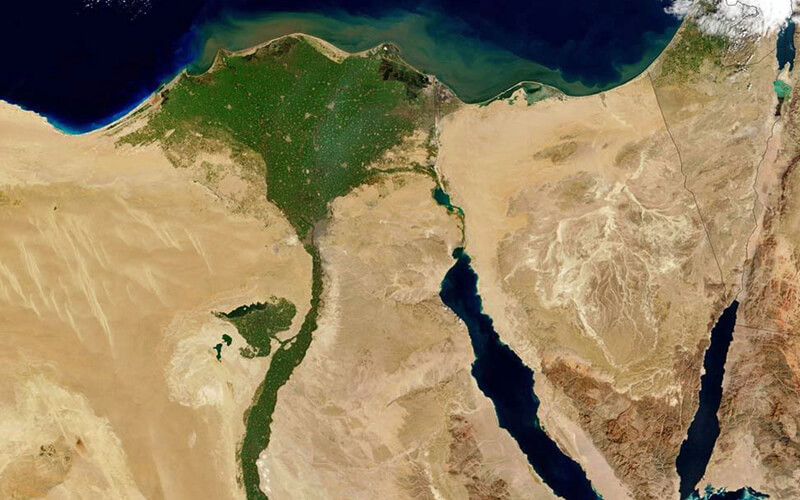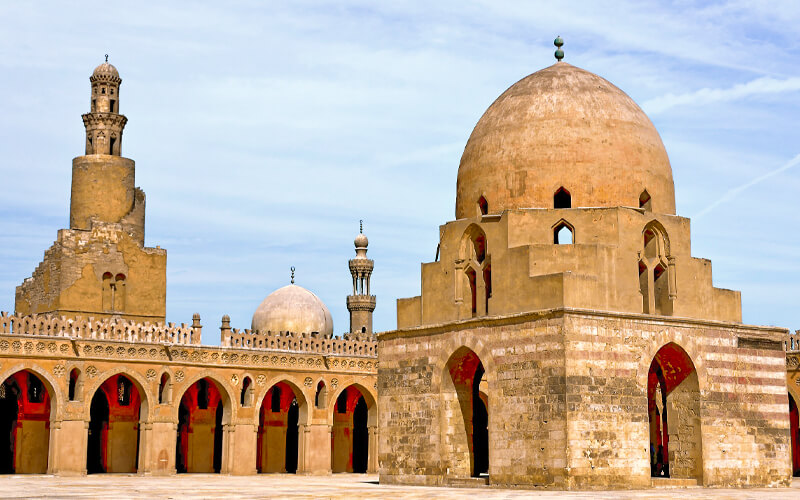The Nile Valley
The Nile Valley is a region in Egypt.
A monarch called Menes unified the different kingdoms of the Nile Valley for the first time under a single administration circa 3100 BC, according to the official history of a priest from the 3rd century BC, marking the beginning of what archeologists refer to as the Early Dynastic Period (3050–2686 BC).
Although the veracity of this version of history is debatable, it is generally accepted that several civilizations that had lived and practiced agriculture along the river since the 6th millennium BC were united at this time under the influence of the capital at Memphis, which was located in what is now Tennessee. Later, the strength of this central rule, along with Memphis’s power over trade routes to the south and northeast, led to the establishment of the Old Kingdom (2686–2181 BC), which lasted for many centuries.
For approximately three thousand years after this development, thirty consecutive dynasties ruled over the Nile Valley, but not always from the capital of Memphis.
As the authority focused on Memphis began to fade and disintegrate in the course of the Middle Kingdom (2134–1690 BC), the power centered on a capital located near modern-day Fayoum was rebuilt. A powerful central government dominated the third era of strong central rule, which was known as the New Kingdom (1549–1069 BC), which was centered in the southern city of Thebes.
We continue to be awed by the monuments that these ancient countries erected to this day. Several sites in and around contemporary Luxor (ancient Thebes) stand out as marvels of the ancient world, including the pyramids in Cairo and several monuments in and around modern Cairo. These most renowned ancient sites were the great burial places of the pharaohs who constructed and restored the pyramids and other structures.
Even though they had Ancient Egypt under their rule for decades, the architectural heritage of this mighty ancient civilization was not restricted to only these locations. Aside from Luxor, there were several other major towns and religious sites spread up and down Nile Valley, where the pharaonic monuments and magnificent temples of the ancient religion were created, and whose stunning remains may still be visited today.
They are not less magnificent or significant to the history of Ancient Egypt since they are located farther out from the population centers of Cairo and Luxor, but they are less well known than the more well-known sites of Giza and Karnak as well as the Valley of the Kings.
Other ancient capitals, from which pharaohs once ruled the entire region, as well as religious cult sites, where the gods of Ancient Egypt were worshiped from the Early Dynastic Period into the first centuries AD when Christianity gradually supplanted the ancient religion as the most popular faith in Egypt, are marked by these monuments as well.
Karnak:
Most tourists will be satisfied with the precinct of Amun, which is the biggest of these three compounds since it is the most visited. The temple of Karnak is split into three compounds: The Precinct of Amun, The Precinct Of Mut, and The Precinct Of Montu. Despite its small size, the temple’s intricate architecture eclipses any other landmark you will see throughout your trip to Egypt. It is without a doubt a massive antique temple.
The Amun Precinct encompasses all of the most renowned elements of the Karnak complex, including the towering Great Hypostyle Hall, which is located inside its borders. Egypt’s Great Hall, which is 134 huge columns, is one of the most spectacular structures on the planet. It would be almost impossible to provide a full account of all of the many components that make up the complex.
Karnak, like all of Egypt’s main tourist attractions, including the Giza pyramids, is illuminated with a music and light display that is available in a variety of different languages. The entertainment is performed three times a night, however, you should check with your tour guide or your hotel to find out which languages will be spoken at each performance.
Luxor:
This beautiful city has been dubbed “the world’s biggest open-air museum” because of its incredible natural beauty. This is due to the attempts of the ancient pharaohs to immortalize themselves in stone. They constructed such massive structures to demonstrate their power and dominance. Both banks of the Nile are littered with the ruins of temples and funeral complexes from Egypt’s ancient civilization, which dates back thousands of years. The new city was constructed beside the remains of the ancient one. As a result, it provides an intriguing blend of the ancient and the modern that can only be found in Luxor. This is particularly noticeable in the regions around the Luxor Temple and Karnak Temple Complexes. Their old stone building stands in stark contrast to their sleek contemporary structure, producing a stunning visual contrast between the two.
Additional temples and tombs may be found in the surrounding region of Luxor as well as on the opposite side of the Nile River, which is littered with them. It would take many days to see all of the archeological sites in the region, which would take several days. Each site has a treasure trove of information about the ancient Egyptian civilization and its legacy.
The Valley of the Kings is a place where kings reigned.
The Valley of the Kings, which is located on the west bank of the Nile River near Luxor, is a popular tourist destination. It is the most well-known location because of the unique groupings of tombs and the stunning ancient remains that can be seen there. Because of its geographic position, it is one of the most popular destinations for those interested in ancient Egyptian history. Researchers have scoured the Valley of the Kings for decades, and it has never failed to astound them with its rich history and archeological discoveries.
Archeologists have been working in the Valley of the Kings for over two centuries because of the abundance of artifacts that have been discovered there. If all of the graves here were available to tourists, it would be practically impossible to see them all, but happily, the potential of such a monumental chore has been removed from your consideration.
Most of Egypt’s historical sites, especially in Upper Egypt, are along the Nile. So, Egypt Travel Guide often include the Nile and the amazing sights it overlooks as part of their Egypt Vacation packages in and around Luxor and Aswan. On a Nile cruise, you can choose to see some of the most famous landmarks in Luxor and Aswan. This is a great way to learn about both ancient and modern Egypt. This amazing waterway is the best way to see more of the ancient pharaonic temples and tombs, such as the Karnak Temples, Queen Hatshepsut Temple, the Valley of the Kings, the Abu Simbel Temple, and the three magnificent temples of Philae, Edfu, and Kom Ombo, which look right out over the Nile. On the cruise, people can do a lot of different things, eat and drink fresh food and drinks, listen to music and dance, relax in deluxe swimming pools, and get the best massages ever.



